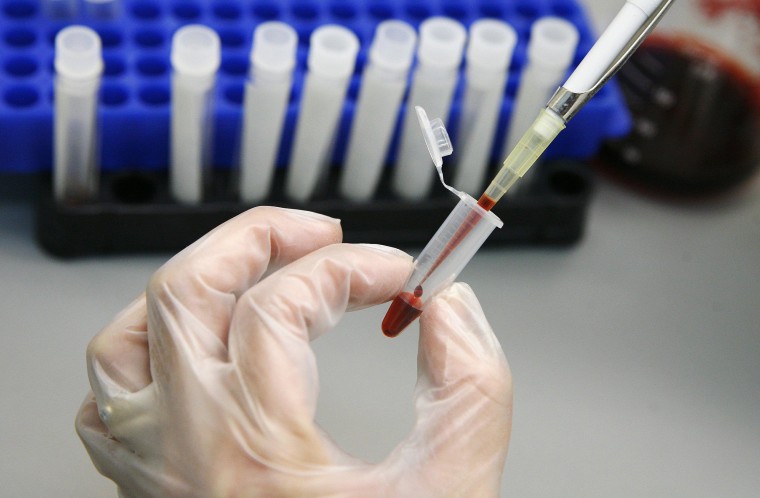Scientists have found a new virus that can be transmitted by blood transfusions and other blood-based products.
It looks a little like the hepatitis C virus, which can cause permanent liver damage, and a little like the human pegivirus, which appears to be harmless, the team reports in the journal mBio.
They’ve named it human hepegivirus-1 (HHpgV-1).
“We have been able to find a new virus. It’s clearly transmitted as a result of human (blood) transfusion,” said infectious disease expert Dr. Ian Lipkin, who oversaw the study team at Columbia University.
“It is the first transfusion-associated virus that’s been described in a long time. We don’t know if it is going to be a significant cause of human hepatitis,” Lipkin told NBC News.
“It is the first transfusion-associated virus that’s been described in a long time."
But probably not, the researchers said.
“So far there is no need to be concerned,” said Amit Kapoor, an assistant professor at Columbia University who led the study.
“We really don’t know if there is ongoing transmission of this virus. It may be good for you.”
Lipkin agreed.
“I’m not really worried about this particular virus,” he said. “This is not SARS. This is not MERS. This is not HIV.”
To find it, the team sampled blood banked at the National Institutes of Health from 46 volunteers between 1974 and 1980. They found it in two samples. Both patients appear to have "cleared" the virus and there is no evidence it caused any disease.
All the volunteers got blood products to treat hemophilia. The virus only showed up after they got transfusions.
“This is not SARS. This is not MERS. This is not HIV.”
Then they looked at samples from 106 people in another study, and found the virus in two more people. One appears to have been infected for as long as five years but both cleared the virus, too.
"We just don't know how many viruses are transmitted through the blood supply. There are so many viruses out there, and they need to be characterized in order to ensure that transfusions are safe," Kapoor said.
Hemophilia was once only treated with blood products taken from people. Now it's often treated with genetically engineered products, which do not carry infectious agents.
Now that the genetic sequence of this new virus is published, Lipkin said, other scientists can start looking for it.
“More than 30 million blood components are transfused annually in the United States alone. Surveillance for infectious agents in the blood supply is key to ensuring the safety of this critical resource for medicine and public health,” the researchers wrote.
In the same issue of mBio, another team led by Lipkin reports they found a new virus related to hepatitis A virus in seals. It doesn’t seem to make the seals sick but it’s a possible ancestor of hepatitis A, they wrote.
“This finding suggests that the diversity and evolutionary history of these viruses might be far greater than previously thought and may provide insight into the origin and pathogenicity of hepatitis A virus,” they wrote.
They’ve named it phopivirus.

